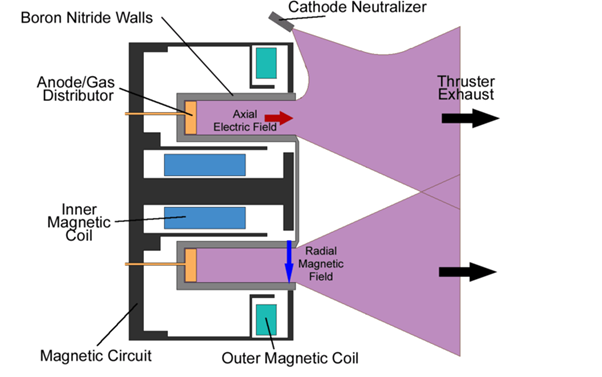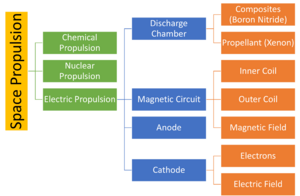Difference between revisions of "Space electric propulsion"
| Line 4: | Line 4: | ||
Electric thrusters typically use much less propellant than chemical rockets because they operate at a higher specific impulse than chemical rockets. Due to limited electric power the thrust is much weaker compared to chemical rockets, but electric propulsion can provide thrust for a longer time. | Electric thrusters typically use much less propellant than chemical rockets because they operate at a higher specific impulse than chemical rockets. Due to limited electric power the thrust is much weaker compared to chemical rockets, but electric propulsion can provide thrust for a longer time. | ||
[[File:electric_propulsion.png | |||
[[File:electric_propulsion.png|Schematic Diagram of electric propulsion system]] | |||
[[File:roadmap_overview.png|thumb|Roadmap Overview]] | [[File:roadmap_overview.png|thumb|Roadmap Overview]] | ||
Revision as of 02:59, 12 October 2023
Electric Propulsion in Space
Roadmap Overview
Spacecraft electric propulsion uses electrostatic or electromagnetic fields to accelerate mass to high speed and thus generate thrust to modify the velocity of a spacecraft in orbit. This method leverages the charge/mass ratio of propellants, with relatively small potential differences potentially generating high exhaust velocities. This reduces the amount of reaction mass or propellant required, but increases the amount of specific power required compared to chemical rockets.
Electric thrusters typically use much less propellant than chemical rockets because they operate at a higher specific impulse than chemical rockets. Due to limited electric power the thrust is much weaker compared to chemical rockets, but electric propulsion can provide thrust for a longer time.

